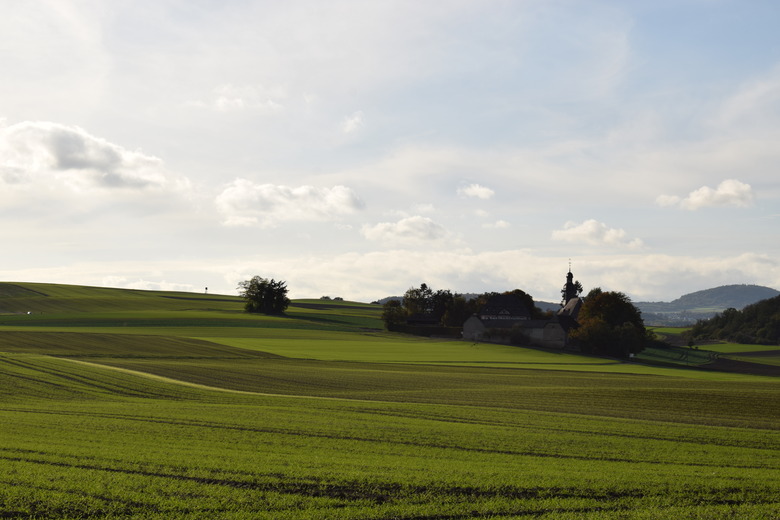Patterns Of Population Growth In An Ecosystem
Many factors affect population growth patterns, but one factor is a species' intrinsic growth rate. The birth rate minus the death rate with no environmental restrictions defines a species intrinsic growth rate. Within an ecosystem, however, resource limits and predation also effect population growth. There are four main patterns of population growth: J-pattern, logistical growth, temporally fluctuating and predator-prey interaction. J-pattern population growth rarely persists as natural limitations eventually impose one or more of the other three patterns of population change on the species.
J Pattern Growth
J Pattern Growth
A population with unlimited resources, no competition and no predation displays J-shaped population growth. Also known as exponential growth, the population growth begins slowly when there are few individuals and then rapidly increases at its intrinsic growth rate. The growth rate soon becomes nearly vertical. While this can happen after a population plunge due to fire or disease, J-shaped population growth occurs infrequently in most macro species. Another time that J-shaped growth occurs is when a species moves into a new environment where there is no competition or predation. The growth pattern of an invasive species, such as emerald ash borer and Asian carp, demonstrates J-shaped population growth. Normally, J-shaped population growth can't be maintained for long, eventually being limited by resources or competition.
Logistical Growth
Logistical Growth
Populations limited by resources or competition have logistical growth patterns. The population growth starts slowly and has an exponential phase, similar to J-shaped growth, but must compete for resources and never reaches its intrinsic growth rate. Eventually, the growth rate tapers off to a steady state when the environment can't support any more individuals of the species. This steady state is the carrying capacity of the environment. Sometimes the population overshoots the maximum carrying capacity leading to rapid die-off, usually due to starvation. The population drops below the carrying capacity, and then slowly recovers to the carrying capacity. These population growth oscillations can continue for some time, especially if the carrying capacity itself changes.
Temporally Controlled Growth Patterns
Temporally Controlled Growth Patterns
Seasonal changes have big effects on some short-lived species such as diatoms and algae. Some species have large seasonal population growth bursts. Once freed by circumstances from predation, rapid algal growth causes algal blooms. Other species suffer from seasonal population suppression when cold weather hits. Diatoms in freshwater lakes suffer from population die-off in cold weather. Diatom species with fast intrinsic growth rates initially have an exponential population growth rate, but slower reproducing species of diatoms eventually replace the faster growing species when temperatures warm. Cooling fall temperatures prevent the slower growing diatoms from completely eliminating the competition. These fast-growing diatom's growth patterns show rapid growth to high numbers, a slow slump back to low numbers, a fall population growth increase followed by winter die-off. The carrying capacity of the ecosystem is constantly in flux for these organisms with resultant variation in the numerical response of the species.
Predator Prey Growth Patterns
Predator Prey Growth Patterns
One of the most studied population growth models is where predator and prey populations oscillate together; the growth of the predator population nearly always lags behind the growth of the prey population. This oscillating pattern is the Lotka-Volterra model. In these ecosystems, the numerical response caused by predation controls the prey's population growth instead of scarce resources limiting the prey's population growth. After the prey population declines, so does the predator population; the prey population then grows exponentially until the predator population rebounds. In these models, diseases and parasites act as predators because they increase the death rate of the prey.
Cite This Article
MLA
Rose, Kasandra. "Patterns Of Population Growth In An Ecosystem" sciencing.com, https://www.sciencing.com/patterns-population-growth-ecosystem-8024871/. 22 November 2019.
APA
Rose, Kasandra. (2019, November 22). Patterns Of Population Growth In An Ecosystem. sciencing.com. Retrieved from https://www.sciencing.com/patterns-population-growth-ecosystem-8024871/
Chicago
Rose, Kasandra. Patterns Of Population Growth In An Ecosystem last modified August 30, 2022. https://www.sciencing.com/patterns-population-growth-ecosystem-8024871/
